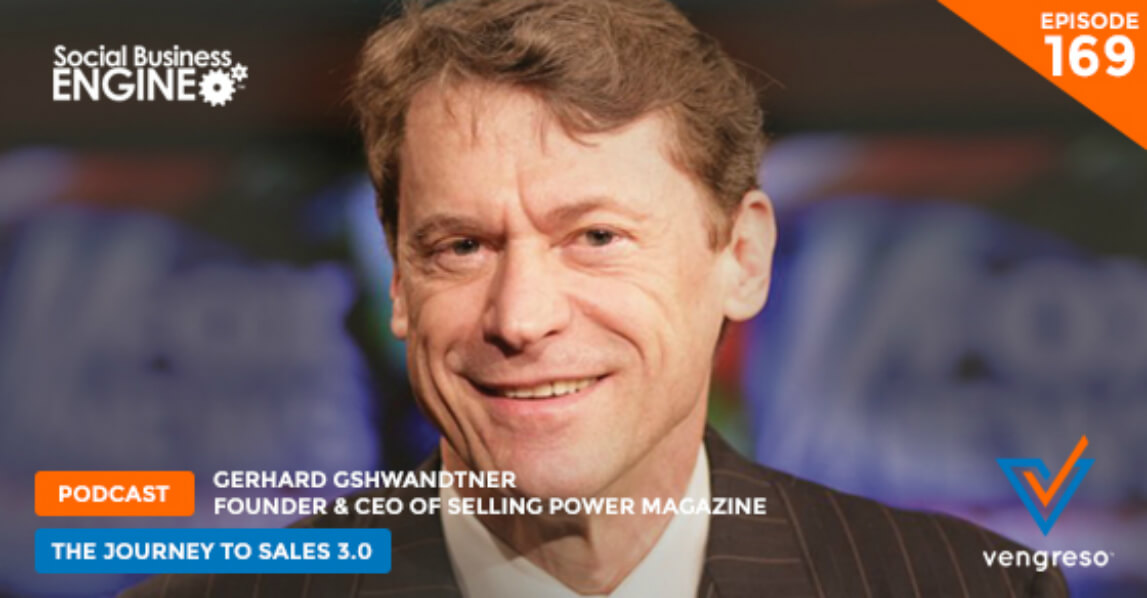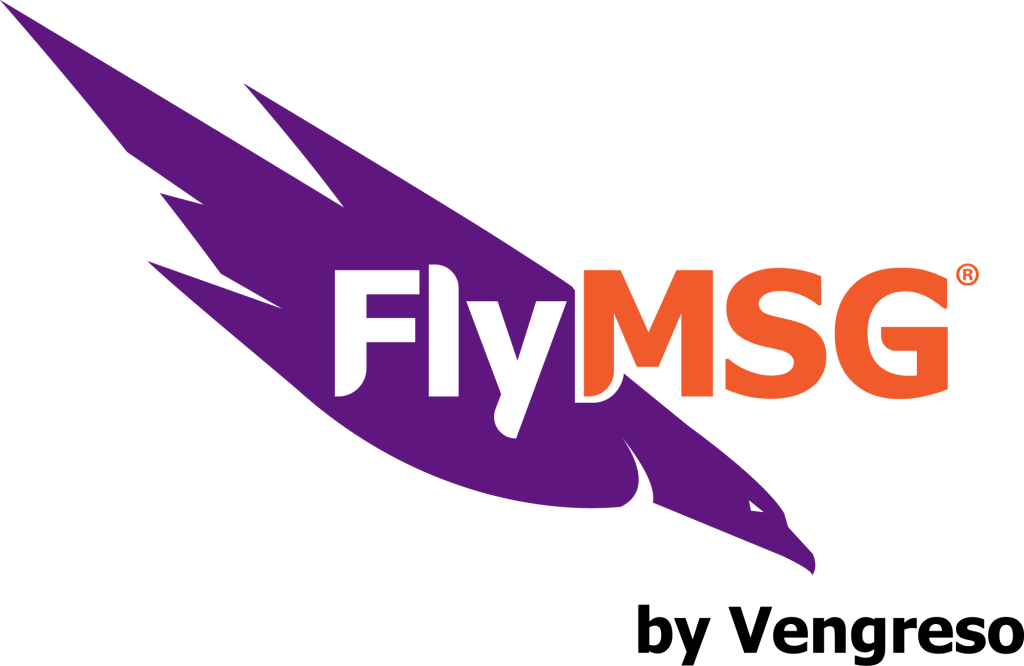Three Big Trends Business Leaders Must Embrace
Gerhard Gshwandtner is the Founder and CEO of Selling Power Magazine, the leading media property that provides senior sales managers with high-quality content. Selling Power Magazine delivers content through print, audio, video, webinars, and sales leadership conferences designed to help sales leaders create a more efficient and effective sales organization on their journey to sales 3.0.
Originally from Austria, Gerhard worked with a French multi-national company training their 1,600 salespeople before moving to the U.S. and starting his own business. In 1981 he morphed that business into Selling Power Magazine. Gerhard established The Sales 3.0 Conference in 2007 to help sales leaders integrate people, process, and technology. A year and a half ago he created the workshop Peak Performance Mindset. 50 trainers have already been certified, and 5,000 people have gone through the training. On this episode, Gerhard opens up about the three biggest trends in business all leaders must understand.
3 Major Trends in Modern Business
1. The Waves of Change
The sales profession has changed over the years. Gerhard says, “The changes have gone from ripples to big waves.” Sellers no longer have the advantage – buyers do, and as each new wave crashes, it washes out what has worked in the past.
[clickToTweet tweet=”Changes have gone from ripples to waves, each is washing out what’s worked in the past. @gerhard20 ” quote=”Changes have gone from ripples to big waves, each wave is washing out what’s worked in the past. @gerhard20 #sbeshow”]
Gerhard mentions that productivity is elusive and our minds are easily distracted. We’re living in the now culture and need to focus more on the present moment. He referenced the acronym WIN – What’s Important Now – to help people distinguish between trivia and treasure. When you’re in the present moment, you listen better and can spot more opportunities.
[clickToTweet tweet=”You have to distinguish between trivia and treasure. @gerhard20 #GoVengreso” quote=”You have to distinguish between trivia and treasure. @gerhard20 #GoVengreso”]
Each generation has their own culture and language requiring different methods of communication and engagement. For example, millennials want to understand the higher meaning of the company they work for, not just the monthly Profit and Loss statement. Gerhard says the older generations should attempt to understand their values.
2. Sales 3.0
Before jumping into Sales 3.0, let’s look at Sales 1. 0 and 2.0 first. Sales 1.0 involved face to face interactions. Salespeople with the best presentations closed the most deals. Sales 2.0 incorporated CRM systems, mobile, big data and cloud. New technologies required the sales professional to become a better listener, much of it happening through online channels.
Gerhard says Sales 3.0 enables salespeople to be more efficient. Software powered by artificial intelligence, machine learning, and other cognitive computing tools are directing salespeople and managers on how to be more productive. SAP’s Digital Board Room is an excellent example of Sales 3.0 in action. Executives can instantly receive responses to questions that would typically entail a delayed response from staffers.
Digital transformation is happening everywhere, and Gerhard says that those who resist will become roadkill – they’ll become obsolete. He postulates that 50% of Fortune 500 companies will be gone in ten years due to the influx of innovative companies that are disrupting every industry. According to Michael Dell, the rate of innovation is ten times what it was only three years ago.
[clickToTweet tweet=”Those who resist digital transformation will become roadkill. @gerhard20 #sales #salesleadership ” quote=”Those who resist digital transformation will become roadkill. @gerhard20 #sales #salesleadership “]
Leaders should embrace digital transformation to help their salespeople to learn faster. Taking advantage of the technologies will provide your team with actionable insights. Gerhard recommends conducting your own research to strategize for the future. You can find information and studies from McKinsey & Company, Gartner, Altimeter Group and thought leaders on YouTube.
3. Adaptation, innovation, and integration
To be successful in the chaotic business environment of today, review the business perspective and personal perspective. A business perspective questions the following:
- People: How can I adapt my employees to new realities of selling?
- Process: How well are the processes integrated with my people?
- Technology: How well is technology integrated with processes and the actions of my people?
A personal perspective includes three factors that lead to personal success:
- Mindset: Keep growth in mind, embrace change and the available tools.
- Skillset: You must do better than the best to be the best, and constantly be looking for ways to improve how you do things.
- Toolset: Exploit technology and quit wasting time on technologies you aren’t using.
[clickToTweet tweet=”Be an ongoing improvement machine. @gerhard20 #GoVengreso” quote=”Be an ongoing improvement machine. @gerhard20 #GoVengreso”]
Gerhard says there needs to be more integration to help people grow. People aren’t changing from sharing ideas and thoughts with them. Their self-limiting beliefs hold them back, and leaders should work to help them replace those with self-empowering beliefs so they can reach their full potential.
Gerhard closed the podcast with this question for you to ponder – “technology is constantly getting better, what are you doing to get better?”
P.S. Meet me at the Sales 3.0 conference where I’ll be recording interviews for the Social Business Engine podcast.
Featured On This Episode:
- Gerhard Gshwandtner on LinkedIn and Twitter
- Selling Power Magazine’s website
- Sales 3.0 Conference
- Selling Power Magazine on Facebook and Twitter
- Visit the Vengresowebsite
- Follow Vengreso on Twitter
- Social Media Strategies Summit’s website – Use the code SBENYC for 15% off of the 2017 New York event!
- Discover how to boost your sales through the Vengreso Social Selling Virtual Boot Camp
- Write a review of this podcast in iTunes
- Social Business Engine on Twitter: @sbengine
There are TWO WAYS you can listen to this podcast. You can click the Listen Now button at the top of this page…
Or, you can listen from your mobile device’s podcast player through iTunes or Stitcher.
This article originally appeared on Social Business Engine.







